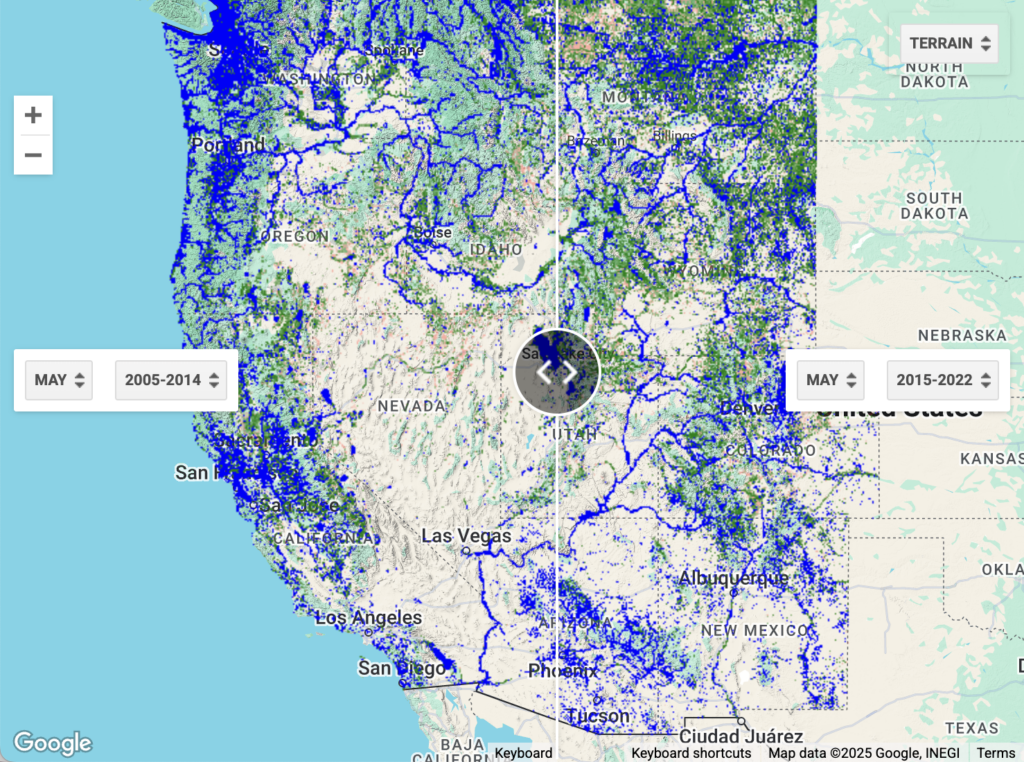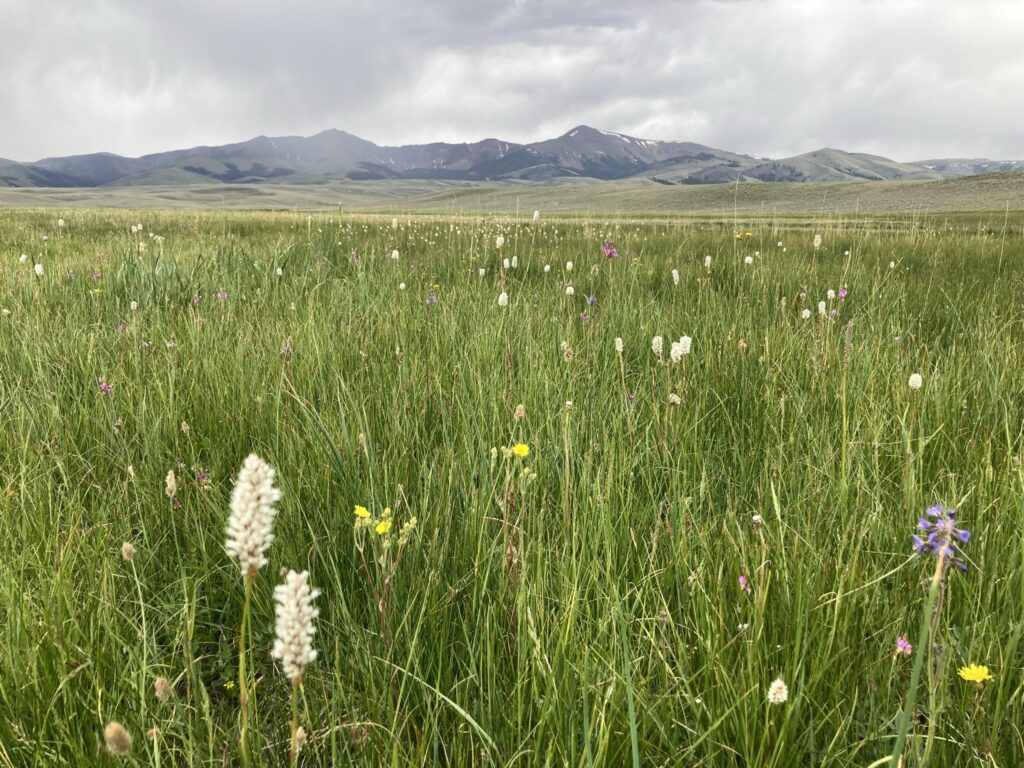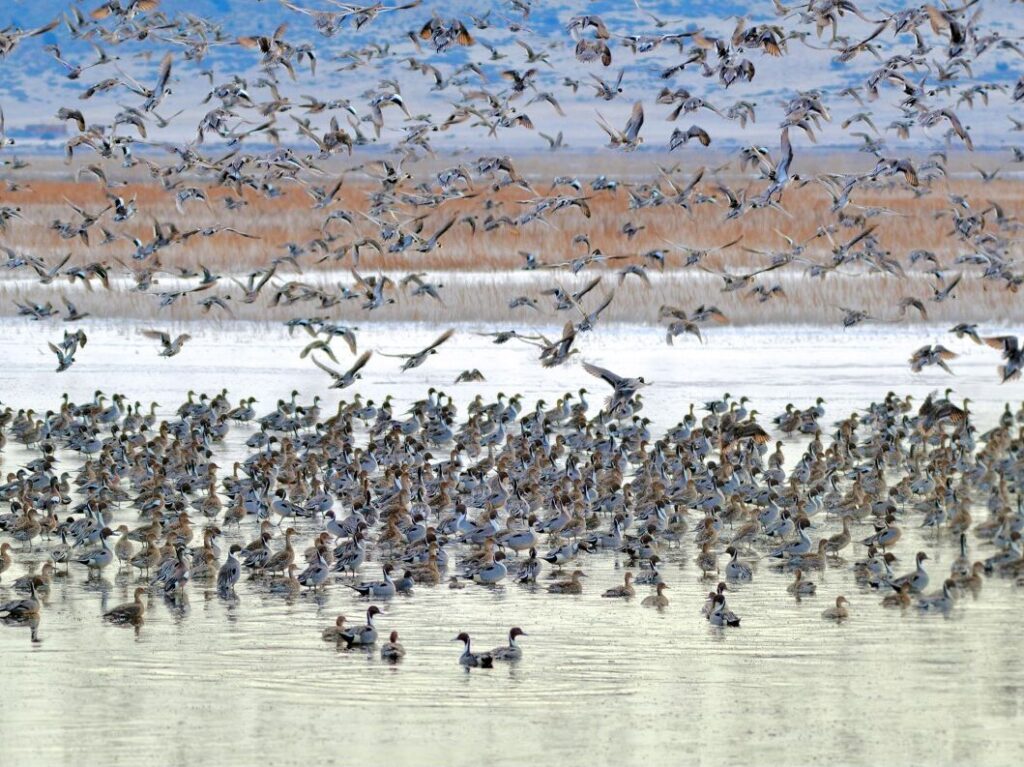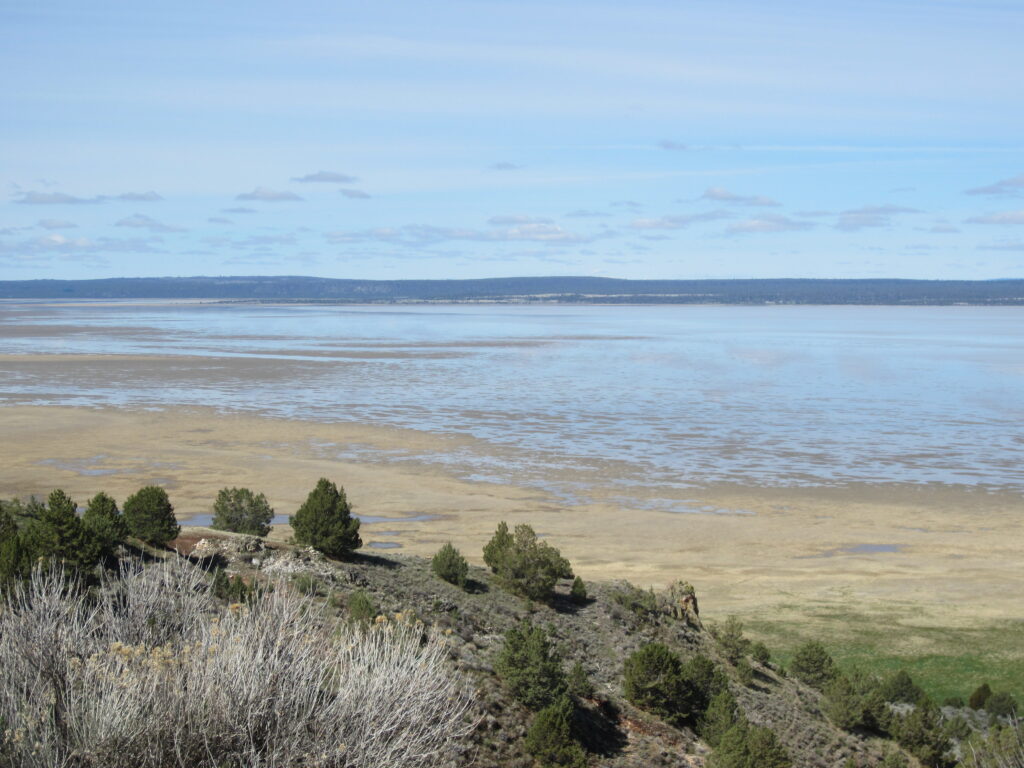ABOUT THE WETLAND EVALUATION TOOL (WET)
To understand how wetland drying is affecting the Intermountain West, IWJV researchers are using satellite imagery to monitor the timing and duration of seasonal flooding on both natural and agricultural wetland habitats (the latter being primarily flood-irrigated hay or grain fields flooded postharvest) from the mid-1980’s to the present-day. This data is being shared with our partners through the Wetland Evaluation Tool (WET)*.
This spatial wetland analysis product enables users to track changes in surface water over space and time. Combined with local knowledge, the tool can help land managers create a landscape-scale picture of important areas to target for land and water conservation.
Contact Teagan Hayes, Science to Implementation Specialist, to learn more.
*WET is supported by Google Earth Engine and is constantly evolving as data expands and the tool is updated.
access the tool

Resilience Module
The resilience module allows users to investigate whether surface water is declining, stable, or increasing over time. Users can investigate resilience as long-term surface-water trends (1984-2021) in temporary, seasonal, and semi-permanent wetlands. This information can be useful for managers and conservation practitioners as they prioritize habitats for protection or restoration actions.

Hydroperiod Module
By evaluating how long a wetland is flooded each year, researchers are able to assign the area a hydroperiod classification (semi-permanently, seasonally, or temporarily flooded). This, in turn, supplies context about the type of habitat it provides across seasons. The Hydroperiod Module allows users to visualize classified wetland hydroperiods in a user-defined place/time, and export graphs showing the change in abundance of these wetlands across years of interest.

Surface Water Module
This module enables users to visualize and quantify changes in surface water between time periods of interest. Users can select months/years and use the slider bar for visual comparison, or draw a polygon around their area of interest to calculate the changes in surface water footprint between the two time periods.
need HELP NAVIGATING?
You can access our WET user guide, tutorial, and fact sheet below. Contact Teagan Hayes, Science to Implementation Specialist, for help with the tool.
WET User Guide
A two-page user guide intended to help conservation practitioners navigate WET and access its data.
WET Fact Sheet
A fact sheet giving a high-level overview of the Wetland Evaluation Tool and the science behind it.
beyond the iwjv
On Land
The Wetland Evaluation Tool was featured in the Western Landowners’ Alliance magazine.
River 2 Lake Newsletter
The Wetland Evaluation Tool was highlighted by the Flathead Lake River to Lake Initiative.
Three Weeks of WET
Learn about the three modules of the Wetland Evaluation Tool and their uses an Instagram series.
Line Rider
The Idaho Cattle Association highlighted WET in the December 2022 issue of Line Rider magazine.
Conserving at Flyway Scales
The USFWS-Migratory Bird program explores WET and its use in collaborative habitat conservation.
byrdyologist on Instagram
This post shows how WET can be used to predict bird habitat use in the Pacific Flyway.



